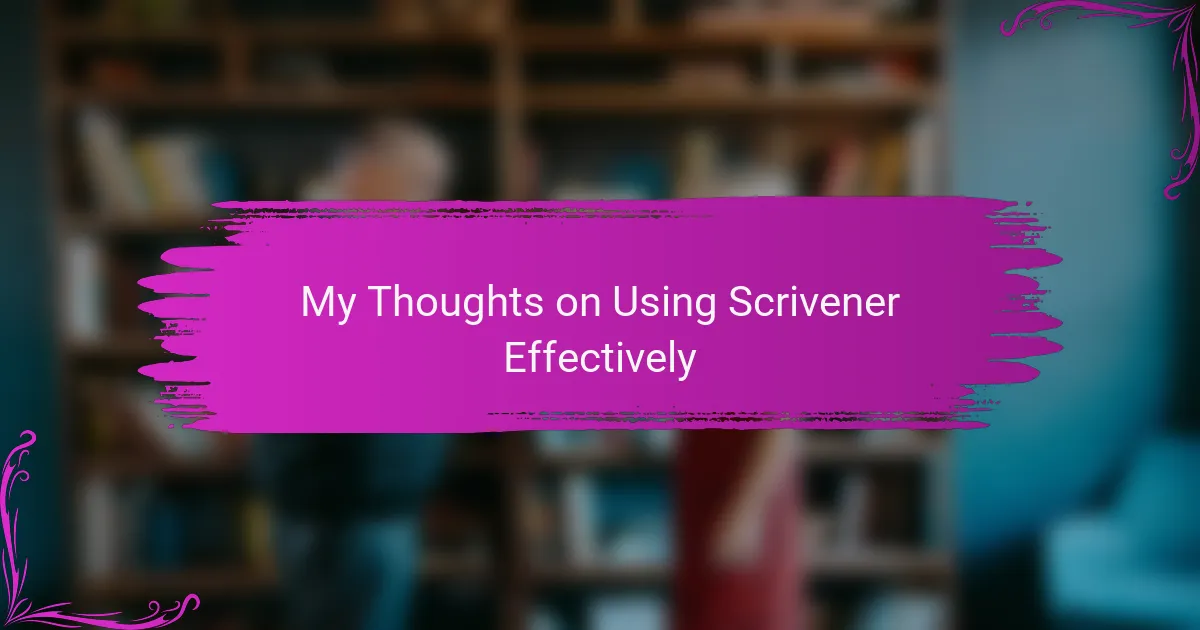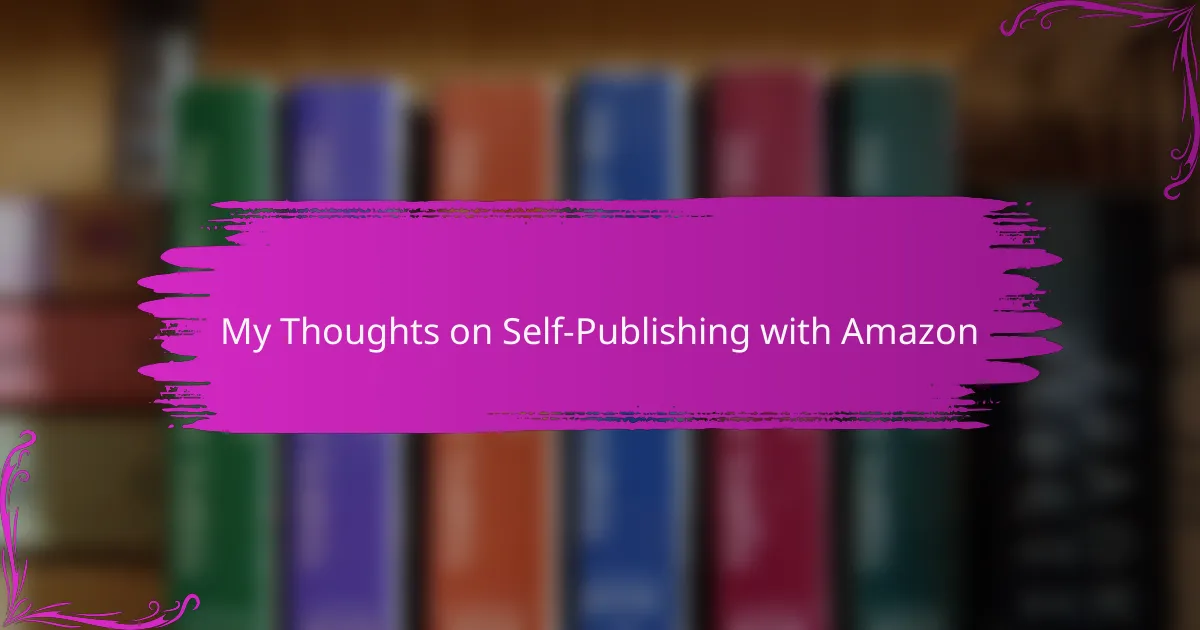Key takeaways
- Hemingway’s writing style is defined by simplicity and directness, employing short sentences and the “iceberg theory” to convey deeper meanings.
- His minimalistic dialogue reveals character emotions and relationships, allowing readers to engage actively with the text.
- Techniques such as close reading and comparative analysis enhance understanding of Hemingway’s unique approach to storytelling.
- Applying Hemingway’s principles, like conciseness and subtext, can improve one’s own writing and create emotional connections with readers.
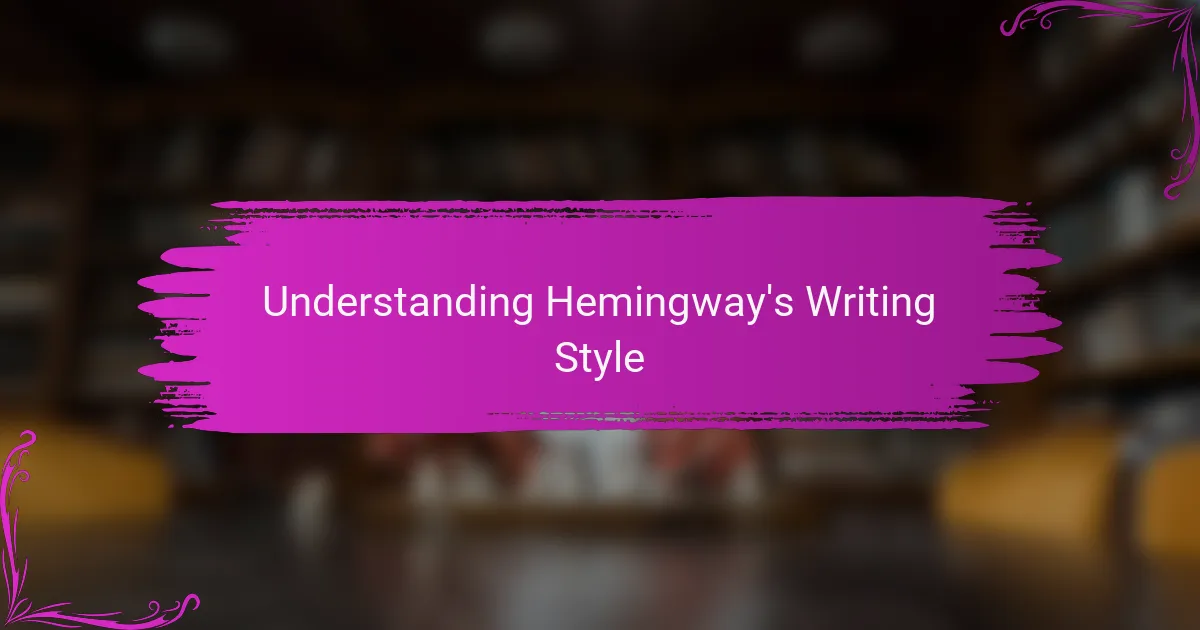
Understanding Hemingway’s Writing Style
Hemingway’s writing style is often characterized by its simplicity and directness. I’ve always appreciated how he communicates complex emotions through understated prose. His use of short, declarative sentences creates a sense of tension and immediacy, pulling the reader into the narrative.
In my analysis, I found that Hemingway often employs the “iceberg theory,” where much of the story’s meaning lies beneath the surface. This approach invites readers to engage actively with the text, interpreting the unspoken layers of meaning. When reading “The Old Man and the Sea,” I felt the weight of the protagonist’s struggle even though Hemingway barely elaborates on his inner thoughts.
Here’s a concise comparison of some notable elements of Hemingway’s style:
| Element | Description |
|---|---|
| Simplicity | Uses straightforward language and structure to convey profound themes. |
| Iceberg Theory | Focuses on surface details while leaving deeper meanings unspoken for reader interpretation. |
| Dialogue | Utilizes realistic and minimalistic dialogue to reveal character relationships and tensions. |
| Emotional Depth | Communicates intense feelings through subtext rather than explicit statements. |
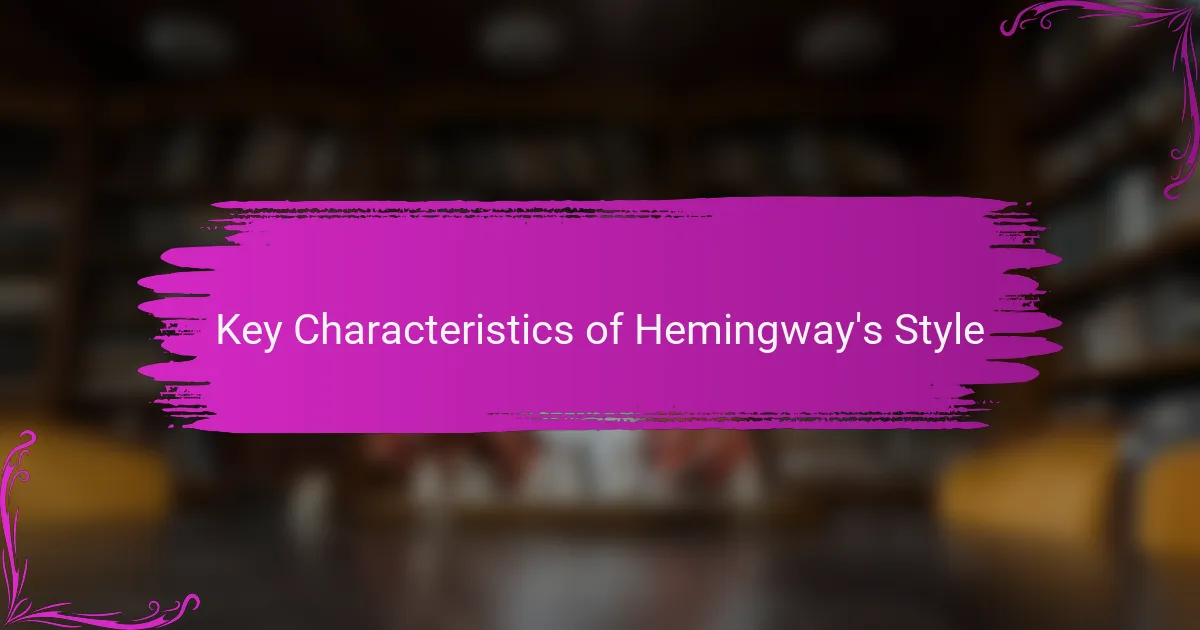
Key Characteristics of Hemingway’s Style
Hemingway’s writing style is renowned for its economy and introspective depth. He often employed short, declarative sentences, which create an impactful rhythm that pulls readers in, compelling them to ponder the submerged emotions and universality of human experiences. I remember the first time I read “The Old Man and the Sea.” The simplicity of his prose belied the profound themes of struggle and endurance that resonated with me long after I’d put the book down.
One striking characteristic of Hemingway’s style is his use of the “Iceberg Theory,” where much of the meaning lies beneath the surface of the text. This technique invites readers to engage actively, filling in the emotional breadth of the characters’ experiences. As I unraveled the layers of his stories, I found myself reflecting on my own life, feeling a sense of connection to the struggles of his protagonists.
- Conciseness: Hemingway’s sentences are typically short and powerful, avoiding unnecessary words.
- Dialogue-Driven: Conversations among characters are crafted to reveal character traits and emotions subtly.
- Iceberg Theory: Emphasizes the underlying themes and emotions that aren’t explicitly stated, urging readers to interpret the text.
- Sparse Description: Descriptive language is used sparingly, focusing instead on action and thought.
- Naturalism: Often grounds characters in reality, showcasing their struggles within the human condition.
Exploring these characteristics not only deepened my appreciation for Hemingway but also broadened my understanding of how impactful storytelling can be achieved through simplicity.
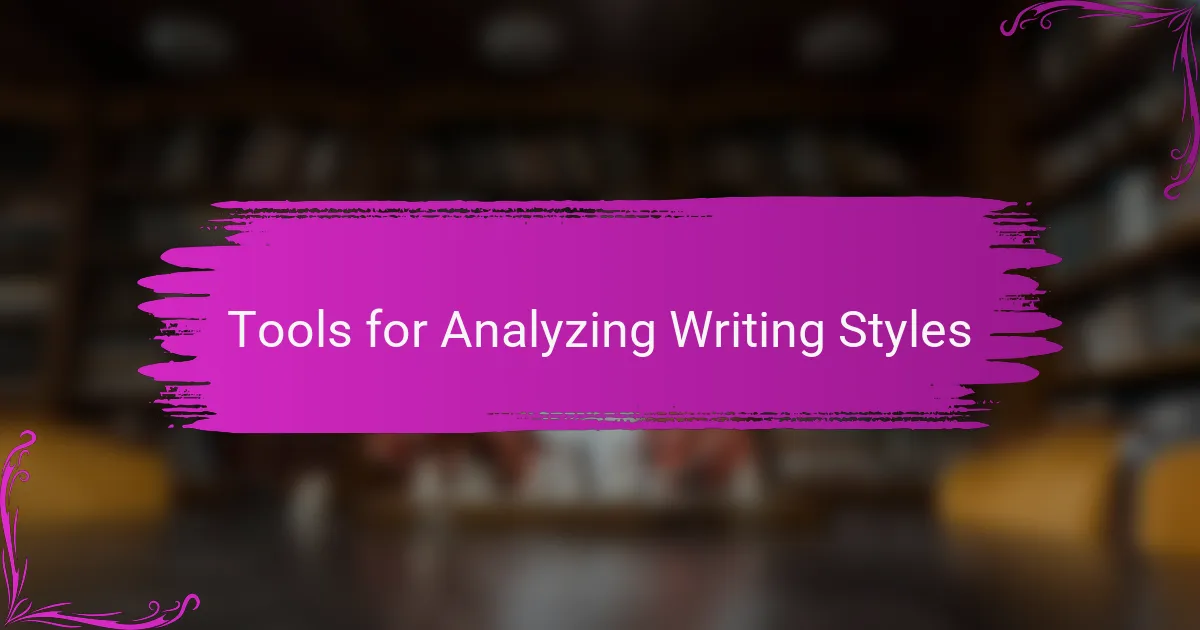
Tools for Analyzing Writing Styles
When I analyze writing styles, I often rely on a few essential tools that help unpack the layers of a writer’s craft. One of my favorites is a close reading technique, where I immerse myself in the text, paying attention to word choice, sentence structure, and overall rhythm. This process has opened my eyes to how even the simplest words can carry heavy emotional weight, much like Hemingway’s concise sentences that evoke profound themes.
Another valuable tool in my arsenal is comparative analysis. By contrasting Hemingway’s style with that of contemporaries, I can gain a deeper understanding of his unique approach. For instance, when I re-read works by Faulkner or Fitzgerald alongside Hemingway, I notice how Hemingway’s restraint in language creates a stark but powerful emotional landscape that invites introspection. Have you ever felt the difference in how various authors convey emotion? This comparison enhances my appreciation for Hemingway’s minimalistic technique.
Additionally, I find that digital tools and resources can be incredibly beneficial for analyzing writing styles. Software that highlights sentence length, vocabulary diversity, and passive voice can provide insights into an author’s stylistic choices. I often use these tools to gauge how Hemingway’s minimalist dialogue serves his narrative, allowing me to appreciate the nuances that come alive beneath the surface—an intriguing aspect that keeps me engaged in his storytelling.
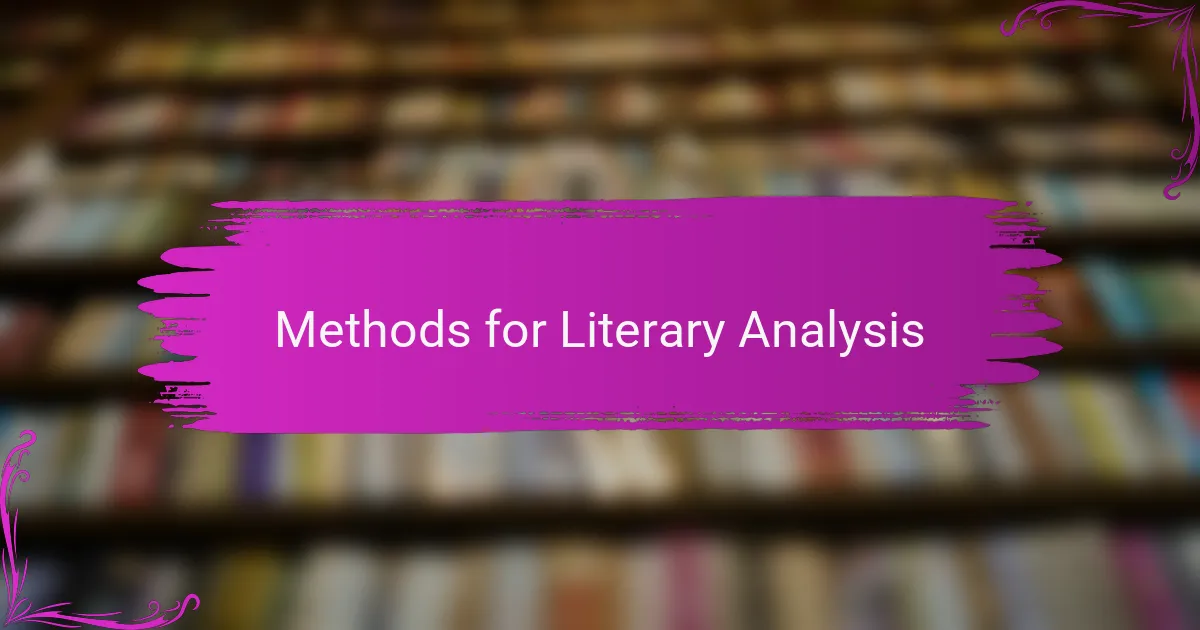
Methods for Literary Analysis
When it comes to literary analysis, one method I find particularly enriching is close reading. This technique allows me to dive deep into the text, examining each word and sentence for its layers of meaning. For instance, when I read Hemingway, I often focus on his choice of adjectives and verbs, which may seem simple at first glance. However, I’ve discovered that even the most straightforward phrases carry significant emotional weight, shaping the reader’s experience in a profound way.
Another method I enjoy is thematic analysis. I look for recurring themes throughout a body of work, which helps me understand an author’s broader message. With Hemingway, I often find myself pondering themes of loneliness and resilience. When I reflect on these motifs, especially in stories like “A Farewell to Arms,” I can’t help but feel a connection to the human experience—each theme resonating with my own life experiences and observations. Have you ever encountered a story that made you reflect on your own struggles? That’s the magic of literature in action.
Moreover, I appreciate the benefits of comparative analysis with Hemingway’s contemporaries, like Faulkner. This approach offers a fresh perspective on Hemingway’s technique. When I juxtapose their styles, I notice Hemingway’s economy of language standing in stark contrast to Faulkner’s rich descriptions. It’s fascinating how this comparison highlights how effectively Hemingway conveys emotion through simplicity, making me appreciate his stories even more. Each reading becomes a journey of discovery, revealing not just the text, but also insights about myself and the world around me.

Personal Insights on Hemingway’s Techniques
Hemingway’s writing style has always resonated with me due to its simplicity and depth. I remember the first time I read “The Old Man and the Sea”—the way he wove profound themes of struggle and resilience with such sparse language struck a chord. It made me realize how powerful understatement can be; the emotions lie beneath the surface, waiting for readers to dive deeper.
His use of the “iceberg theory,” where the majority of the story’s meaning isn’t explicitly stated, challenges readers to engage actively with the text. I often find myself reflecting on my own choices as a writer; the more I embrace simplicity, the more I learn about what to leave unsaid. This technique not only invites interpretation but also creates an emotional connection with the characters and their experiences.
| Hemingway’s Techniques | Personal Insights |
|---|---|
| Concise Language | It encourages me to express complex ideas simply and clearly. |
| Iceberg Theory | It prompts a deeper emotional engagement and invites personal interpretation. |
| Focus on Dialogue | I’ve learned how dialogues can convey subtext and reveal character depth. |
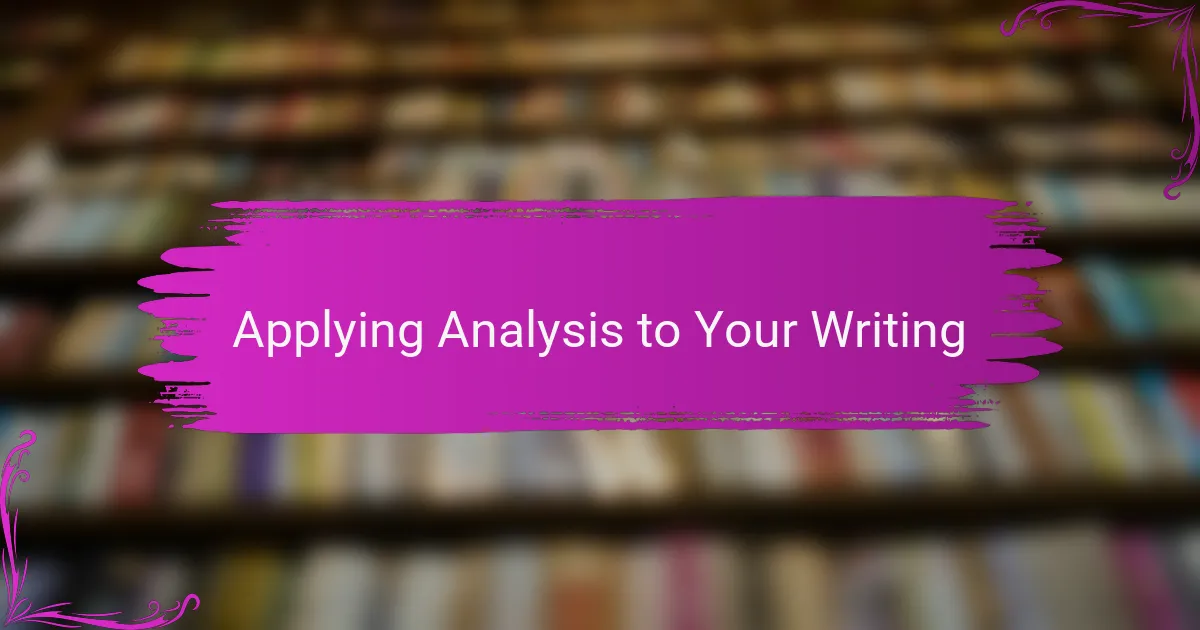
Applying Analysis to Your Writing
The analysis of Hemingway’s writing style serves not only as a lens through which to appreciate his work but also as a practical guide for improving our own writing. I’ve experienced firsthand how breaking down his techniques can reveal their effectiveness. When I consciously apply Hemingway’s focus on simplicity and brevity in my writing, I find that my thoughts become clearer and more impactful. Have you ever noticed that powerful ideas often get lost in complicated language? Embracing clarity can truly amplify our messages.
Another element I’ve integrated into my own writing is the “iceberg theory.” By allowing my readers to discover meaning through subtext, I invite them to engage more deeply with my work. This approach has been a game changer for me. For instance, in my narratives, I’ve experimented with leaving certain emotions unsaid, enabling readers to fill in those gaps with their own interpretations. It creates a connection that resonates long after they’ve put the piece down. Have you tried this technique? It can transform the reader’s experience!
Additionally, I find that adopting Hemingway’s concise use of dialogue not only streamlines my writing but also enriches character development. I recall how a simple conversation in one of my pieces revealed far more about the characters than lengthy exposition ever could. This practice of letting dialogue carry emotional weight has made my writing feel more alive and relatable. How do your characters express their feelings? Sometimes, the most powerful exchanges are the ones left unspoken.

